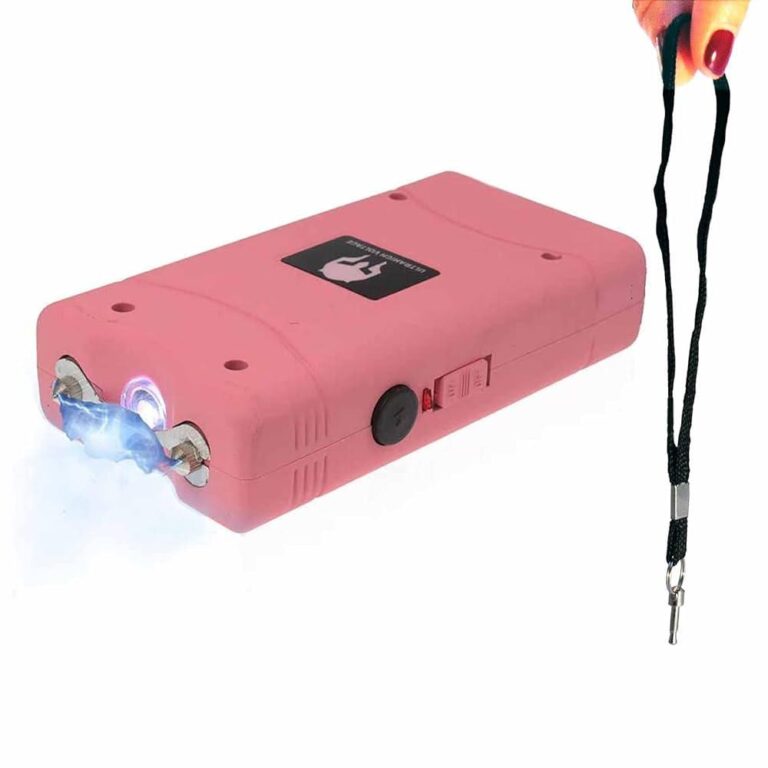Table of Contents
- Understanding the Factors That Influence Stun Gun Battery Life
- Comparing Battery Types and Their Impact on Performance
- Best Practices for Maximizing the Lifespan of Your Stun Gun Battery
- When and How to Replace Your Stun Gun Battery for Optimal Safety
- In Summary
Understanding the Factors That Influence Stun Gun Battery Life
Several variables come into play when considering how long a stun gun battery can effectively hold a charge. One of the most significant factors is usage frequency. The more often a stun gun is deployed, the faster its battery will drain. Continuous or repeated discharges consume more power, so users who rely heavily on their device can expect shorter battery life compared to those who use it sporadically. Additionally, the duration of each use impacts battery longevity-longer activation times lead to quicker depletion.
Another crucial element influencing battery lifespan is the type and quality of the battery itself. High-grade rechargeable batteries tend to maintain their capacity longer than cheaper alternatives, even after numerous charge cycles. Environmental conditions such as temperature extremes also play a role; cold weather can reduce battery efficiency, while excessive heat can cause premature wear. Lastly, how well the stun gun is maintained-regular charging, proper storage, and avoiding overdischarge-can significantly extend or reduce its operational lifespan. Consider these factors to optimize your device’s performance and reliability.
Comparing Battery Types and Their Impact on Performance
When it comes to powering stun guns, the type of battery used can significantly influence both the device’s performance and longevity. Primarily, stun guns utilize either disposable alkaline batteries or rechargeable lithium-ion batteries. Alkaline batteries are widely available and cost-effective, but they tend to drain faster with frequent use, especially under high voltage draw. On the other hand, lithium-ion batteries offer a higher energy density and a longer lifespan, which translates to more consistent power output and fewer replacements over time. However, rechargeable batteries require proper maintenance, including regular charging cycles, to maintain optimal performance.
Battery type also affects how quickly a stun gun can discharge energy and recharge between uses. Devices equipped with lithium-ion cells typically enjoy a faster recharge time and deliver a more stable current, ensuring the stun gun operates at its peak voltage and amperage when needed most. In contrast, alkaline battery-powered stun guns might experience a gradual drop in output voltage during extended use, potentially diminishing effectiveness. Key factors to consider include:
- Voltage Stability: Crucial for sustained stopping power in critical moments.
- Recharge Time: Impacts how soon the device can be safely used again.
- Battery Lifespan: Determines how often you’ll need replacements or recharges.
Best Practices for Maximizing the Lifespan of Your Stun Gun Battery
To extend the operational life of your stun gun’s battery, consistent maintenance plays a crucial role. Regularly recharge the battery before it completely drains, ideally after every use or at least once a month if unused. Avoid overcharging by disconnecting once the battery reaches full capacity, as excessive charging can reduce battery efficiency. Additionally, keep the device in a cool, dry environment since extreme temperatures-both hot and cold-can degrade battery performance and lifespan. Make sure to clean the battery contacts with a soft cloth periodically to prevent dirt buildup that can obstruct the electrical flow.
Incorporating these daily habits will further safeguard your stun gun battery health:
- Store the stun gun away from moisture to prevent corrosion and electrical shorting.
- Test the device periodically to confirm that the battery still holds a sufficient charge and the unit functions properly.
- Use the charger specified by the manufacturer to ensure safe and optimal charging cycles.
- Avoid leaving the stun gun plugged in constantly, as trickle charging after a full charge may cause battery swelling or damage.
When and How to Replace Your Stun Gun Battery for Optimal Safety
Ensuring your stun gun battery is in prime condition is crucial for reliable performance when it matters most. Generally, batteries should be replaced every 12 to 18 months, depending on usage frequency and the manufacturer’s recommendations. Signs that indicate it’s time for a replacement include a noticeable decrease in voltage output, longer charging times, or inconsistent shock delivery. Regularly checking your stun gun’s power level can prevent unexpected failures; many models feature a built-in indicator or test button to assist with these checks.
To replace your stun gun battery safely and effectively, follow these key steps:
- Disconnect the device: Always ensure the stun gun is turned off and disconnected from any power sources before beginning.
- Use manufacturer-approved batteries: Using the correct battery type preserves device integrity and guarantees optimal performance.
- Handle with care: Avoid puncturing or damaging the battery during removal and installation.
- Test after replacement: After installing the new battery, conduct a functionality check using the device’s test feature.
In Summary
In summary, understanding how long stun gun batteries typically last is essential for ensuring your device is ready and reliable when you need it most. While battery life can vary based on usage, quality, and maintenance, following best practices can help extend their longevity and performance. Whether you’re a first-time owner or looking to maintain your current stun gun, staying informed about battery care will give you peace of mind and maximize your device’s effectiveness. Stay safe and stay charged!Check Our Other Blogs
- StunGun – Your Trusted Source for Stun Guns, Laws, and Self-Defense Tips
- PepperSprayLaws – Your Trusted Resource for Pepper Spray Information
- StunGunLaws – Your Trusted Guide to Stun Gun Legality and Safety





